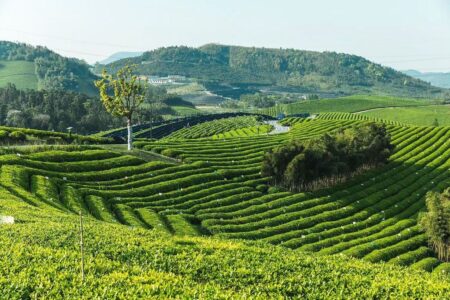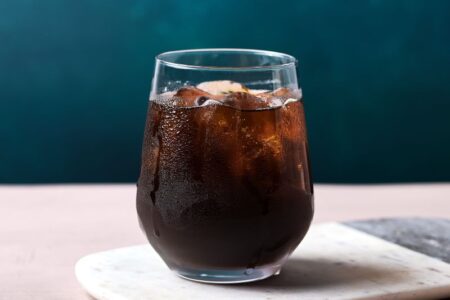Cold Brew Tea Is Hot

Cold brew for coffee, and especially tea, is really popular right now. Many coffee companies offer more than one version of cold brew at their service bar. And small-batch bottled coffees are becoming more available as their popularity increases. While some teahouses have been making cold brew iced teas for years, others are just getting into the act. What is the appeal in cold brew versus hot brewed tea?
Ease in preparation is one reason that people love cold brew. You don’t even have to boil water to make it. But it’s the difference in flavor that has people really excited. The first thing they rave about is how smooth it is. Not only does cold brew tea lack astringency and bitterness, it has an abundance of fresh, floral, fruity notes. Those who don’t care for it say something is missing, that it lacks the depth and complexity of hot brew tea. What makes the two so different? Cold and hot brew teas taste different because their chemical make-up is different from one another.
When you pour water over tea leaves, the soluble chemical compounds in the leaf dissolve into the solution that will be the tea we drink. The rate at which the compounds dissolve into the water is determined by the size and complexity of the molecule, the strength of the bonds that hold it together and the temperature of the water. The hotter the water, the more stored energy it has. And the more energy it has, the greater the rate of dissolution of compounds and the larger the number of compounds it can dissolve. (Also, the hotter the water the more likely it can “cook” some compounds, changing their nature and their taste.)
So when we pour water that is not hot over tea leaves, the action is slow and gentle. Among the first compounds to dissolve are the simple carbohydrates, with their sweet flavors. Some of the more simple amino acids emerge into the solution with their smooth, rich flavors. The compounds that are responsible for many of the floral flavors of tea, such as geraniol, nerol and phenylacetaldehyde are also easily dissolved. But the astringent compounds (such as the polyphenols) and the bitter-tasting methylxanthines (such as caffeine) are large and complex and not easily brought into the solution. Cold brew teas tend to be lower in acids as well. They are also missing some components that hot brew tea has and many of those components are bitter and astringent.
Sensory Aspects
But there is another aspect to why iced teas taste different than hot teas, no matter how they were brewed. And that has to do with the nature of the response profiles of the human taste and smell systems.
The sense receptors in the human mouth and nose that perceive the taste and smell of the various chemical compounds in the tea we drink are specialized. There are those that specialize in perceiving cold and those that specialize in perceiving hot. And not just physical hot and cold, but also chemical hot and cold. (Think of capsicum in a chili pepper. Think peppermint, cool and refreshing.) When cold receptors are activated, they inhibit the function of hot receptors, and vice versa. The fragrant, floral aroma and flavors predominant in iced tea activate cold receptors physically and chemically, blocking the hot receptors and their response to the warming, bitter flavors. When hot receptors are activated by hot tea, they not only inhibit the cold receptors and the cooling floral flavors, they perceive more of the warming and bitter compounds in the tea.



